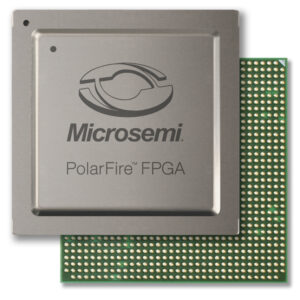Microsemi Corporation and The Athena Group, Inc. (Athena), a leading provider of security, cryptography, anti-tamper and signal processing intellectual property (IP) cores, today announced Athena’s TeraFire® cryptographic microprocessor is included in Microsemi’s new PolarFire™ field programmable gate array (FPGA) “S class” family members. As the most advanced cryptographic technology offered in any FPGA, the TeraFire hard core provides Microsemi customers access to advanced security capabilities with high performance and low power consumption.
 The need for increased cybersecurity has been recognized industrywide, particularly throughout the communications, defense and industrial markets. Athena’s highly secure TeraFire cryptographic microprocessor technology addresses these requirements, offering a comprehensive selection of the most commonly used cryptographic algorithms, including all those allowed for military/government use by the U.S. National Institute of Standards and Technology’s (NIST’s) Suite B, up to the top secret level, as well as those recommended in the U.S. Commercial National Security Algorithm (CNSA) Suite.
The need for increased cybersecurity has been recognized industrywide, particularly throughout the communications, defense and industrial markets. Athena’s highly secure TeraFire cryptographic microprocessor technology addresses these requirements, offering a comprehensive selection of the most commonly used cryptographic algorithms, including all those allowed for military/government use by the U.S. National Institute of Standards and Technology’s (NIST’s) Suite B, up to the top secret level, as well as those recommended in the U.S. Commercial National Security Algorithm (CNSA) Suite.
The TeraFire cryptographic microprocessor also supports additional algorithms and key sizes commonly used in commercial Internet communications protocols such as TLS, IPSec, MACSec and KeySec. The core has been leveraged in both application-specific integrated circuit (ASIC) and FPGA implementations since its introduction eight years ago, and the inclusion of differential power analysis (DPA) countermeasures in the PolarFire FPGA core is designed to increase its popularity with both defense and commercial customers.
“Microsemi has long provided the best security for FPGAs, and the addition of Athena’s TeraFire core takes this to a whole new level in solidifying our strong leadership position in the market,” said Bruce Weyer, vice president and business unit manager at Microsemi. “PolarFire ‘S class’ devices are the only FPGA family that allows users to leverage the Athena TeraFire hard crypto microprocessor. It supports a large number of popular algorithms where every algorithm that uses a secret key is available with strong DPA countermeasures. Microsemi’s decision to offer this as a hard core makes designing complex security protocols extremely easy.”
Microsemi’s highly secure, cost-optimized PolarFire FPGAs offer the industry’s lowest power at mid-range densities with 12.7 Gbps Serializer/Deserializer (SerDes) transceivers, as well as high reliability, enabling applications including smart connected factory, functional safety, secure communications and weaponry. The TeraFire cryptographic microprocessor enables significantly better built-in cryptographic capabilities in comparison to any SRAM-based FPGAs and is popular with both defense and commercial customers for its flexibility and efficiency.
The TeraFire core delivers state-of-the-art countermeasures against side-channel analysis (SCA) techniques such as DPA and differential electro-magnetic analysis (DEMA) that could otherwise be used to extract secret keys from the device. Every supported algorithm using a secret or private key is available with countermeasures against SCA. With the Department of Defense’s emerging mandate for strong DPA countermeasures, Microsemi’s PolarFire devices are expected to see strong adoption by defense customers as a result.
“We are pleased to once again collaborate with Microsemi, which has recognized the need to provide FPGA users with the most advanced security features,” said Pat Rugg, Vice President of Sales and Marketing at Athena. “The inclusion of the Athena TeraFire core in its PolarFire FPGAs demonstrates Microsemi’s commitment to markets that require high performance cryptographic algorithms, and continues the strong relationship our two companies have leveraged for several years.”
According to the new market research report titled, “Hardware Encryption Market – Global Forecast to 2022” from Markets and Markets, the hardware encryption market is expected to be valued at nearly $414 billion by 2022, at a CAGR of 29.3 percent between 2016 and 2022. The major factors driving the growth of this market include increasing concern for data security issues and privacy of data, growing requirement of regulatory compliances, expansion of digital content and significant advantage over software encryption technology.
More than a dozen security-focused certifications have been granted to the TeraFire cores present in each Microsemi PolarFire “S class” FPGA family member under the NIST Cryptographic Algorithm Verification Program (CAVP). Covering the most commonly used algorithms and key sizes, PolarFire FPGAs have the largest number of certifications for built-in cryptographic implementations of any programmable logic device according to the NIST CAVP validation lists.
Microsemi’s PolarFire “S class” FPGAs with Athena’s TeraFire cryptographic microprocessor will be available towards the end of the second quarter of 2017. In addition, a soft version of this core is available for Microsemi’s SmartFusion2 SoC FPGAs.
The post Cryptographic microprocessor adds advanced security features to FPGAs appeared first on Microcontroller Tips.

